The Psychology of Biophilic Design
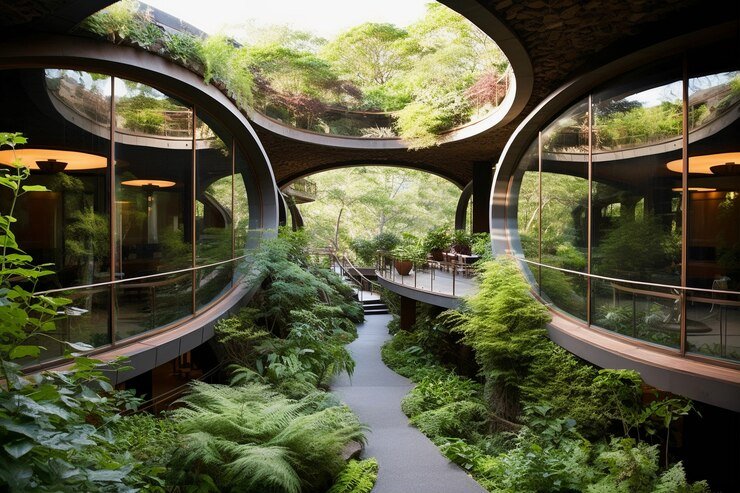
Biophilic Design: Reconnecting Humans with Nature through Architecture
Biophilic Design is an innovative approach to architecture that seeks to satisfy the innate human need to affiliate with nature in the built environment. This concept, while not a distinct architectural style, has become increasingly influential in contemporary design practice. In this exploration, we’ll delve into the origins, characteristics, and psychological underpinnings of Biophilic Design in architecture.
Historical Context and Key Characteristics
The term “biophilia” was coined by psychoanalyst Erich Fromm in the 1970s and later popularized by biologist Edward O. Wilson. Biophilic Design as an architectural concept gained traction in the late 20th and early 21st centuries, driven by research demonstrating the positive impacts of nature on human health and well-being.
Key features of Biophilic Design include:
- Integration of natural elements like plants, water, and natural light
- Use of natural materials and textures
- Incorporation of nature-inspired forms and patterns
- Creation of views and vistas to natural landscapes
- Design of spaces that mimic natural environments
- Emphasis on natural ventilation and air quality
- Integration of dynamic and diffuse light
Cultural Context
The rise of Biophilic Design coincides with a growing awareness of the impacts of urbanization on human health and well-being. It reflects a shift towards a more holistic approach to architecture that considers the psychological and physiological needs of building occupants.
Technological Advances
Biophilic Design heavily relies on advancements in building technologies and materials that allow for the integration of natural elements into built environments. These include green walls, living roofs, advanced daylighting systems, and biophilic patterning in materials and finishes.
Political Landscape
The development of Biophilic Design is influenced by policies and regulations related to sustainability, health, and well-being in the built environment. Many cities and countries have introduced guidelines and incentives to encourage the incorporation of biophilic elements in buildings and urban spaces.
Key Innovators
Several influential architects, researchers, and organizations have been at the forefront of Biophilic Design, including:
Stephen R. Kellert: American social ecologist and author of several seminal books on biophilic design, including “Biophilic Design: The Theory, Science, and Practice of Bringing Buildings to Life.”
Terrapin Bright Green: Sustainability consulting firm that has developed a framework for biophilic design and worked on numerous high-profile projects.
WOHA: Singaporean architectural practice known for its integration of lush vegetation and biophilic elements into high-density urban buildings.
Khoo Teck Puat Hospital by RMJM: A pioneering example of biophilic design in healthcare, featuring extensive gardens, green roofs, and a naturally ventilated central courtyard.
Related Architectural Styles
Biophilic Design is closely related to and often overlaps with other architectural styles and trends that focus on sustainability, health, and well-being, including:
Green Architecture: A broad term encompassing various approaches to environmentally responsible and resource-efficient building design.
Sustainable Architecture: An approach that seeks to minimize the negative environmental impact of buildings by using eco-friendly materials, reducing energy consumption, and optimizing building performance.
Regenerative Design: A holistic approach that aims to create buildings and communities that actively contribute to the health and vitality of the ecosystems they inhabit.
Dialectical Materialist Perspective
From a dialectical materialist viewpoint, Biophilic Design represents a synthesis of technological progress and biological imperative. It emerged from the contradiction between urbanization and the human need for connection with nature. The movement embodies the tension between the efficiency of modern construction techniques and the psychological benefits of natural environments.
Jungian Depth Psychology Analysis
Through the lens of Carl Jung’s analytical psychology, Biophilic Design can be interpreted as an expression of several archetypes:
- The Nature archetype, representing harmony with the natural world, is evident in the movement’s focus on reconnecting with nature.
- The Nurturer archetype, embodying care and well-being, is reflected in the integration of natural elements into built spaces.
- The Self archetype, representing the drive towards wholeness and integration, is manifest in the attempt to create spaces that resonate with our innate biological preferences.
The style’s balance between technological advancement and natural inspiration in Biophilic Design might be seen as a reconciliation of the Animus (associated with progress and innovation) and Anima (associated with intuition and connection) archetypes.
Ego Perspective: Assertions and Insecurities
Biophilic Design asserts the importance of nature in human well-being, even in highly urbanized environments. This approach projects an image of holistic thinking and health consciousness, while also emphasizing a commitment to creating more humane and psychologically supportive spaces.
However, the movement also reveals certain cultural insecurities. The focus on reintegrating nature into built environments might be seen as a reaction to anxieties about the alienating effects of modern urban life. The emphasis on biophilic elements could reflect insecurities about the long-term psychological impacts of disconnection from nature.
Lasting Influence, Criticisms, and Modern Context
Biophilic Design has had a significant impact on contemporary architecture and interior design. Its principles are increasingly being incorporated into various building types, from offices and schools to healthcare facilities and residential spaces. In the modern context, Biophilic Design is informing the development of “healthy buildings” that prioritize occupant well-being.
However, the movement has also faced criticisms. Some argue that the incorporation of biophilic elements can be superficial or tokenistic if not integrated holistically into the design process. Others question the long-term maintenance and viability of some biophilic features, such as living walls or green roofs.
Despite these criticisms, the principles of Biophilic Design are likely to become increasingly central to architectural practice as urbanization continues and the impacts of nature-deficit disorder become more recognized. The movement’s lasting legacy may be its contribution to a more nuanced understanding of sustainability in architecture – one that considers not just environmental impact, but also the psychological and physiological needs of building occupants.
As we face growing challenges related to urban density and climate change, Biophilic Design offers strategies for creating more resilient, healthy, and emotionally nourishing built environments. It promotes a more symbiotic relationship between architecture and nature, and offers a path towards a more holistic and human-centered approach to design.
Bibliography and Further Reading
Beatley, T. (2011). Biophilic cities: Integrating nature into urban design and planning. Island Press.
Browning, W., Ryan, C., & Clancy, J. (2014). 14 patterns of biophilic design: Improving health and well-being in the built environment. Terrapin Bright Green.
Kellert, S. R. (2018). Nature by design: The practice of biophilic design. Yale University Press.
Kellert, S. R., Heerwagen, J. H., & Mador, M. L. (Eds.). (2011). Biophilic design: The theory, science and practice of bringing buildings to life. John Wiley & Sons.
Ryan, C. O., Browning, W. D., Clancy, J. O., Andrews, S. L., & Kallianpurkar, N. B. (2014). Biophilic design patterns: Emerging nature-based parameters for health and well-being in the built environment. ArchNet-IJAR: International Journal of Architectural Research, 8(2), 62-76.
Wilson, E. O. (1984). Biophilia. Harvard University Press.
Read about the Psychology of Other Styles of Architecture
The Psychology of Architecture
The Psychology of Architecture













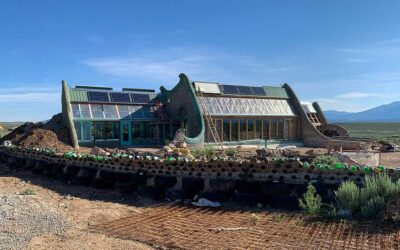
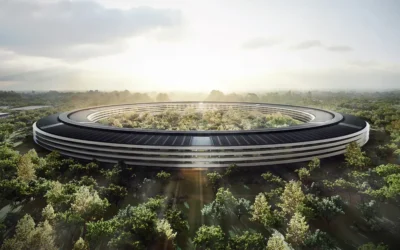
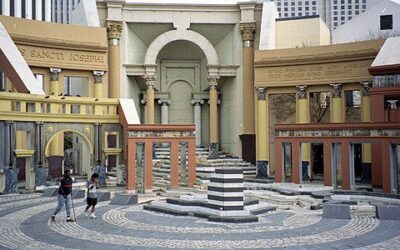
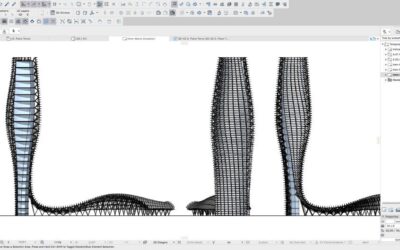
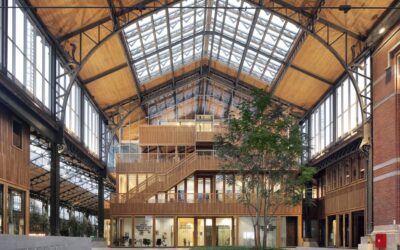
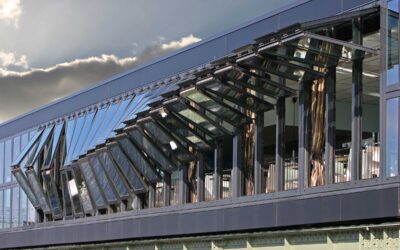
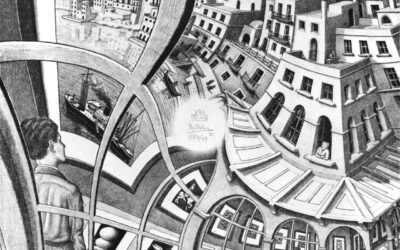

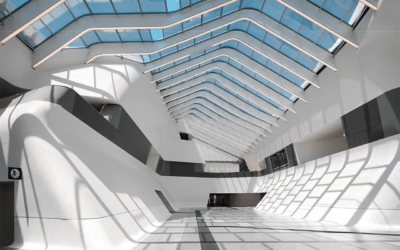
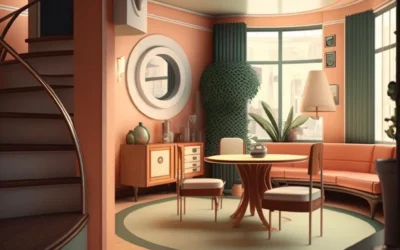

0 Comments